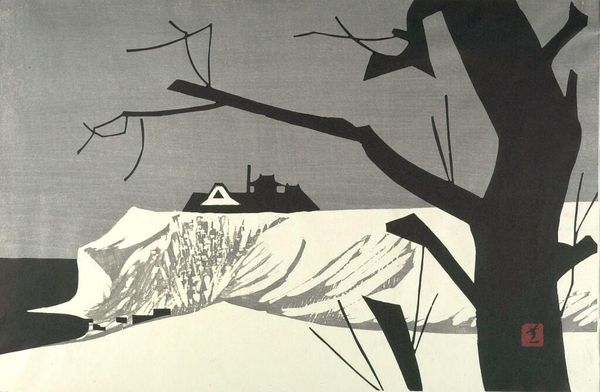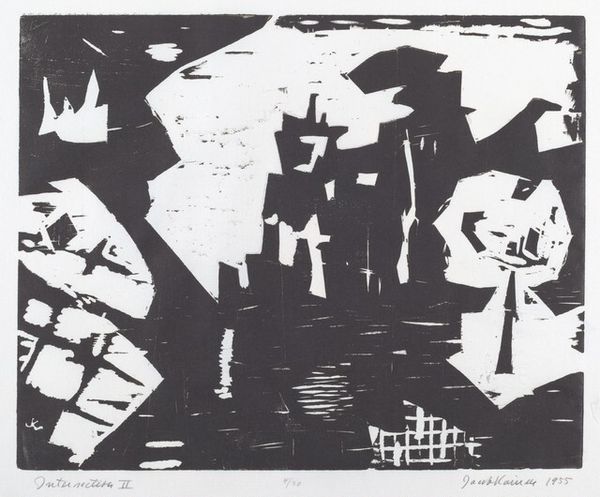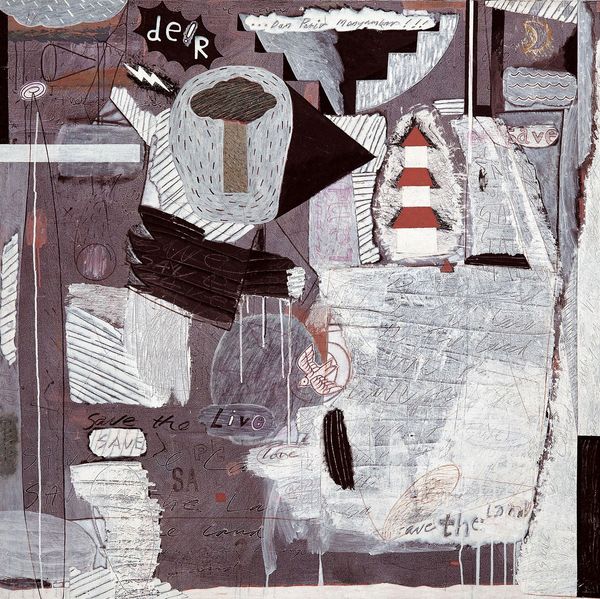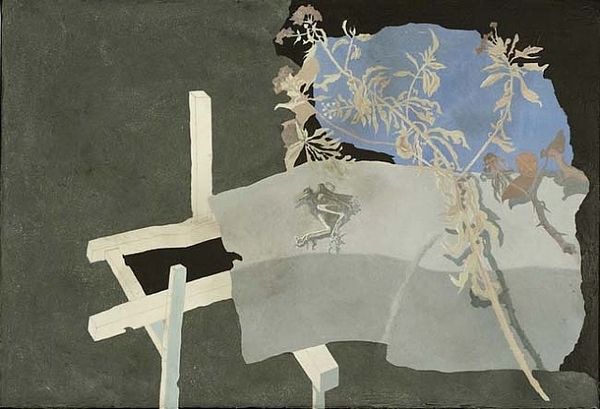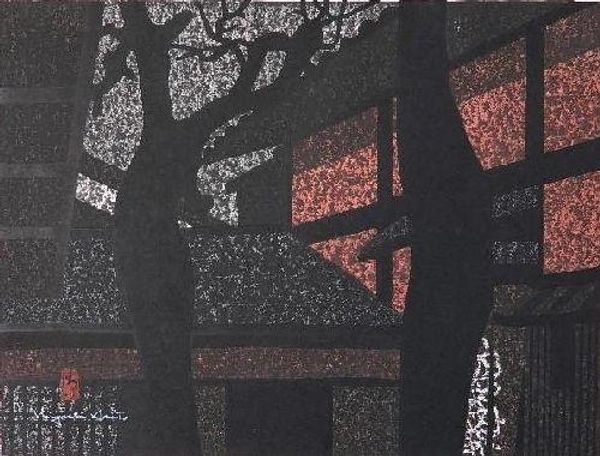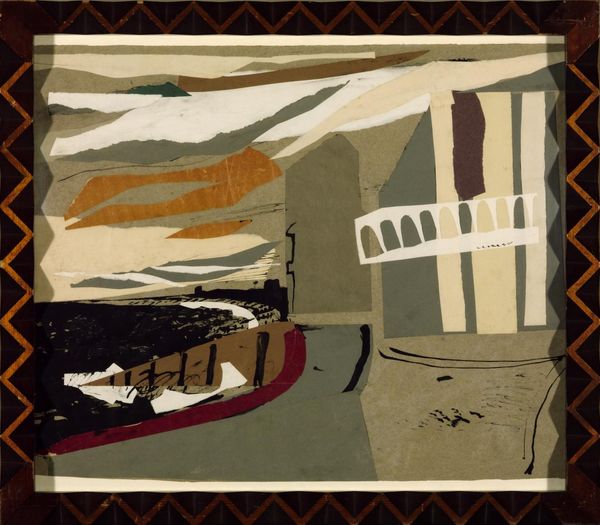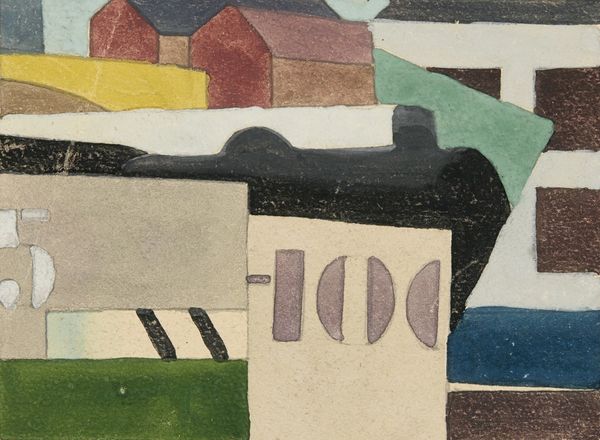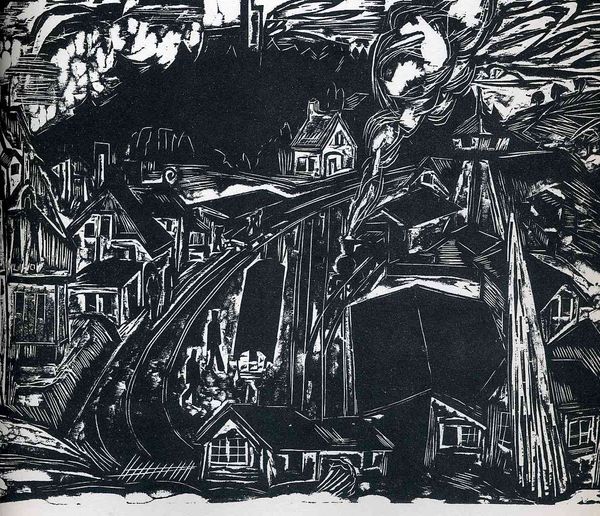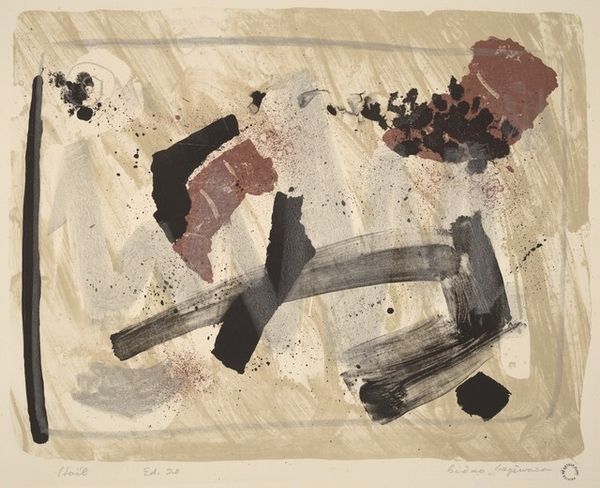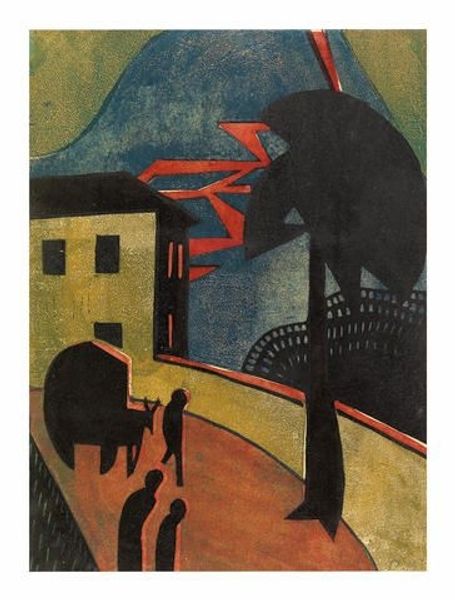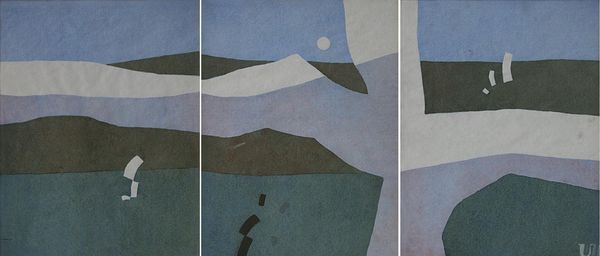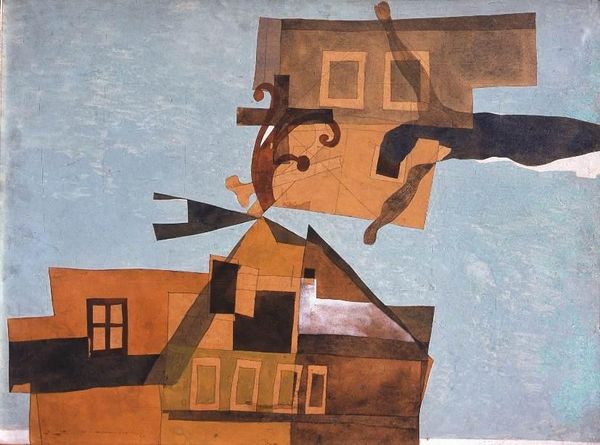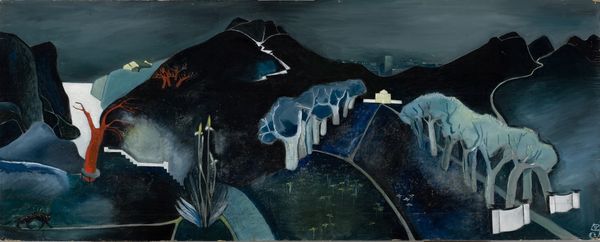
Copyright: Kiyoshi Saito,Fair Use
Editor: Kiyoshi Saito's woodblock print, "Ancient City Nara," created in 1957, evokes a quiet, almost melancholic atmosphere with its stark contrasts and limited palette. What strikes me is the looming architecture in the background. As an historian, what's your perspective on this piece and how it fits into the broader cultural landscape? Curator: That feeling of quietude is palpable, isn’t it? I see it reflecting Japan's post-war introspection. Saito, while working within the Sosaku-hanga tradition, moved beyond pure landscape. Here, we're offered a constructed image of Nara. Notice how the sharp angles and flattening of forms pull away from earlier Ukiyo-e traditions which idealized places through travel or tourism. Editor: So, the emphasis shifts from representing a real place to something else entirely? Curator: Exactly. Think about what "ancient" means in 1957. Japan was rapidly modernizing. By titling the print "Ancient City Nara", and depicting the shadowy presence of architecture, Saito critiques modernization itself and uses the image to reflect the tension between embracing progress while grappling with the loss of cultural heritage. What's fascinating to me is that the small cat offers some perspective to this conversation, where progress may forget what still lives in the shadows. Editor: I didn't consider the cat in that context, but now I see it contributes to that air of loneliness and being forgotten. It feels almost like a guardian of the old ways. Curator: A keen observation. Do you think the scale and color choices might play into that as well? Editor: Absolutely, the heavy use of black and the stark, flat application of red give a sense of monumentality but also distance. Like we're viewing something important but inaccessible. It encourages you to contemplate these shadows. Curator: And the print medium itself—the way the woodblock allows for those precise, clean lines—further emphasizes this deliberate construction of memory. A way to process a nation in transition. Editor: This really broadened my understanding, not just of the piece but of post-war Japanese art in general! Seeing it as a response to modernization really gives it another layer of depth. Curator: I agree; it gives us cause to reflect how art shapes a conversation between past and present, which could not be reached without considering what had come to pass socially.
Comments
No comments
Be the first to comment and join the conversation on the ultimate creative platform.
